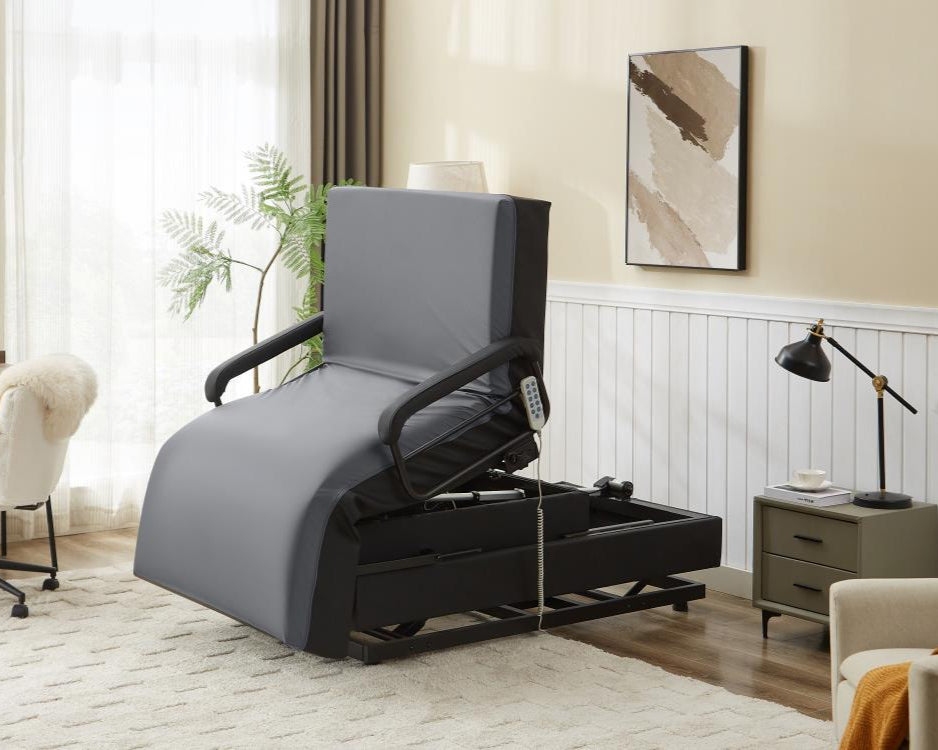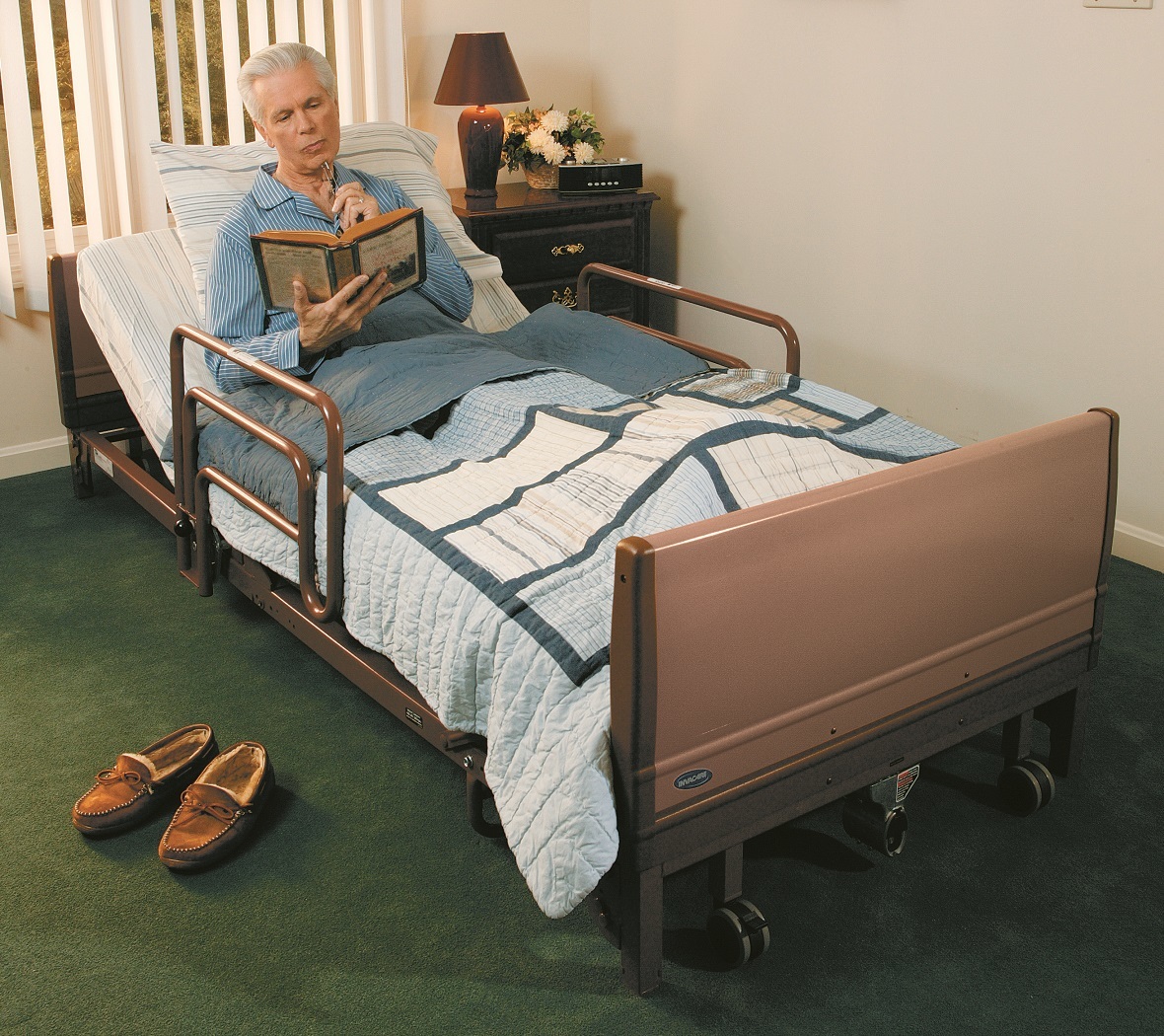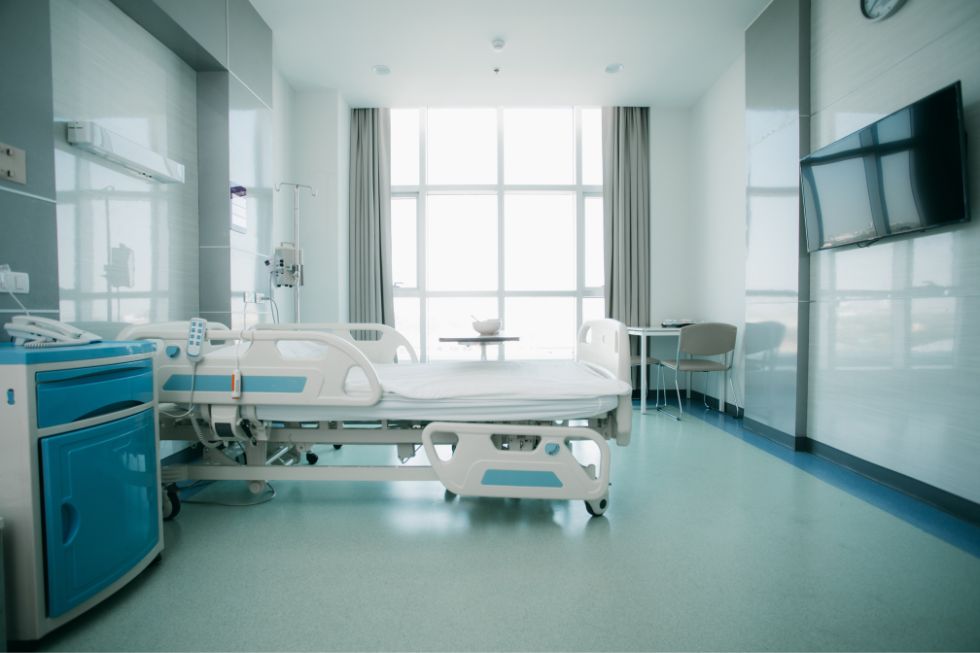Indicators on Hospital Beds For Home Use You Should Know
Indicators on Hospital Beds For Home Use You Should Know
Blog Article
4 Easy Facts About Hospital Beds For Home Use Explained
Table of ContentsThe 4-Minute Rule for Hospital Beds For Home UseGetting The Hospital Beds For Home Use To WorkThings about Hospital Beds For Home UseThings about Hospital Beds For Home UseLittle Known Facts About Hospital Beds For Home Use.Some Known Details About Hospital Beds For Home Use Hospital Beds For Home Use Fundamentals Explained
There are three primary kinds of medical facility beds: handbook, semi-electric, and fully-electric. These beds make use of hand cranks to adjust the bed's elevation and elevate and decrease the head and the foot.
Semi-electric beds have an electrical motor to raise and lower the head and foot portions of the bed. Individuals and caretakers readjust the placing by pushing switches making use of a hand necklace. The elevation of the bed is changed by hand with a hand crank. Full-electric beds have an electrical motor that can elevate the head and foot areas of the bed along with the whole elevation and positioning of the bed.
A Biased View of Hospital Beds For Home Use
Some designs can also relocate into more placements, such as the Trendelenburg (tilt) setting. There are several kinds of medical facility beds, each designed to fulfill details individual needs. Below are some usual types: This is one of the most typical type of health center bed, made for basic medical usage. It has a handbook or electrically adjustable headrest, foot rest, and height.
Lower to the ground than a basic bed. This kind of bed is designed for bigger patients, with a broader structure and higher weight capacity than a conventional bed. This type of bed is created especially for kids, with smaller sized dimensions than a conventional bed. Unique features such as full size side rails and cartoon style.
This kind of bed is made for seriously ill clients who need open surveillance and specialized medical equipment such as ventilators and infusion pumps. This kind of bed is made for usage throughout labor and delivery, with adjustable positions and functions to sustain the mommy and baby during the birth process.
Hospital Beds For Home Use - The Facts
Multiple feature and the devices carry out broadening traction to different components of the vertebra and the extremities without relocating the body. These are simply a few examples of the kinds of hospital beds readily available. The details sort of bed used will rely on the individual's problem, clinical demands, and various other elements.
Below is the important things you need to recognize. A one-function healthcare facility bed is a medical bed that permits a person to relocate just the head or foot area up or down. A 2 feature health center bed usually refers to a kind of medical bed that has 2 flexible functions to aid individuals in hospitals or treatment facilities.

The 15-Second Trick For Hospital Beds For Home Use
A 7-function ICU bed is a kind of medical bed that offers several flexible functions to sustain critically unwell people in a critical care unit (ICU) (hospital beds for home use). The 7 features usually consist of: Back-rest adjustment: The back-rest can be adjusted to various angles to assist the individual stay up or rest easily
Elevation modification: The bed can be elevated or decreased to click to investigate make it easier for people to enter and out of bed, and for caregivers to give care. Trendelenburg placement: The whole bed can be slanted to promote blood flow and flow in the body. Reverse Trendelenburg setting: The bed can additionally be slanted in the contrary instructions to advertise blood flow and blood circulation in the top body.
While even more budget friendly than electrical models, these beds need physical initiative for modifications. The major benefits of hands-on beds are their price and integrity, as they do not rely on electrical energy. The requirement for hands-on effort can be a constraint in scenarios where fast adjustments are essential or where caretakers face physical challenges.
All About Hospital Beds For Home Use
They are fit for individuals that need marginal rearranging for comfort or clinical needs. Semi-electric healthcare facility beds use a balance of guidebook and electrical controls. The head and foot sections are usually adjusted with electrical controls, while the elevation is readjusted by hand. These beds offer an ideal happy medium between guidebook and fully electric alternatives, offering simplicity of use without the complete cost of electrical designs.
Semi-electric beds are fit for patients that need modest changes to the head and foot sections but can handle without frequent elevation modifications. This makes them a cost-efficient option for those looking for convenience and benefit without the need for constant repositioning. Completely electric hospital beds feature electrical controls for smooth changes to the height, head, and foot sections.
Specialty healthcare facility beds, such as ICU beds, long-term care beds, and bariatric beds, are very carefully developed to deal you could try this out with particular clinical needs. These beds use tailored take care of varied individual teams, boosting both end results and comfort. In the adhering to areas, we will check out the major types of specialized hospital beds, outlining their specific advantages and applications.
With years of experience in making electrical direct actuators - hospital beds for home use and close cooperation with the medical care industry, TiMOTION is well-positioned to supply trustworthy medical care solutions. Our up and down integrated company manages every step of the production procedure, from style to actuator setting up, ensuring we supply remarkable value and customized options customized to your certain requirements
Hospital Beds For Home Use Things To Know Before You Buy

For more information about incorporating these innovations right into your products, call us today. Additional analysis:.
Data is sourced from the Medicare Price Report. Accessed January 2025. Temporary acute treatment medical facilities have the highest ordinary number of beds at 187. They are one of the most common sort of medical facility in the united state and comprise more than 50% of united state medical facilities. Children's health centers have 178 beds usually and VA health centers average 175 beds.

8 Easy Facts About Hospital Beds For Home Use Explained
A healthcare facility bed is a bed designed especially for clinical functions. It is not only an area for people to relax, yet likewise a platform for clinical operations. Unlike normal home beds, medical facility beds usually have flexible attributes, which can promote clinical staff to make various adjustments according to the needs of people, such as transforming her response the height, inclination, and assistance angle of the back and legs of the bed.
Report this page